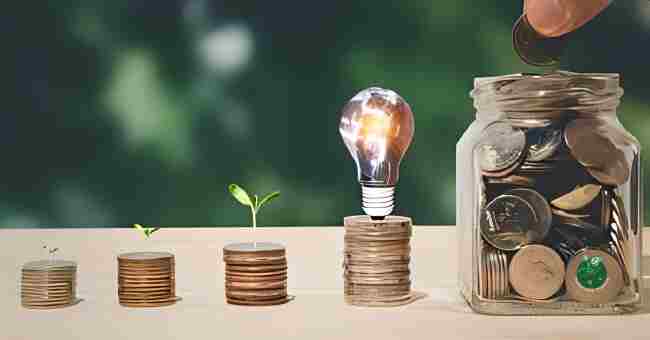Table of Contents
Do you wish to know what is investing in natural capital? Yes, Investing in natural capital is the practice of allocating financial resources towards initiatives and projects that aim to protect, preserve, and sustainably manage the earth’s natural resources and ecosystems.
As a child, I remember the awe-inspiring beauty of the lush forests near my home, teeming with life and providing a sanctuary for countless species.
However, witnessing the gradual depletion of these natural treasures instilled in me a deep appreciation for the vital role they play in sustaining our planet.
Today, I understand the critical importance of preserving our natural capital, not just for its intrinsic value, but also for the invaluable ecosystem services it provides.
In this blog post, I’ll delve deeper into the concept of investing in natural capital, exploring its benefits, strategies, and real-world examples that demonstrate the positive impact it can have on our environment and economies.
Overview: The Importance of Natural Capital in Investment Strategies
In today’s rapidly evolving investment landscape, a new paradigm is emerging – one that recognizes the intrinsic value of the natural world and its pivotal role in shaping our collective future.
As investors seek to align their financial goals with environmental stewardship, the concept of “natural capital” has taken center stage.
This paradigm shift acknowledges that the wealth of our planet’s ecosystems is not merely a luxury, but a strategic asset that can yield significant returns while preserving the delicate balance of our environment.
Defining Natural Capital: Understanding the Wealth of Ecosystems
Natural capital refers to the stock of natural resources and ecosystems that provide essential goods and services to support human life and economic activities.
This encompasses diverse elements such as fertile soil, clean air and water, biodiversity, and the intricate web of life that sustains our planet.
By recognizing the immense value of these natural assets, we can unlock new investment opportunities that not only generate financial returns but also contribute to the preservation and sustainable management of our global environment.
The Value Proposition of Natural Capital Investment
Understanding the Economic Significance of Natural Capital
The economic implications of natural capital are far-reaching and profound. Healthy ecosystems provide invaluable services that contribute directly to human well-being and economic productivity.
From regulating climate and water cycles to pollinating crops and providing raw materials, the role of natural capital in supporting our economies cannot be overstated.
By investing in the conservation and restoration of these vital assets, we not only safeguard the foundations of our economies but also create long-term value for generations to come.
Recognizing the Intrinsic Value of Ecosystem Services
Beyond its economic utility, natural capital possesses an inherent, intrinsic value that transcends monetary considerations. Biodiversity, cultural heritage, and the very essence of the natural world hold immeasurable worth for humanity.
Investing in natural capital represents an opportunity to preserve and enhance these invaluable assets, ensuring that future generations can experience the awe-inspiring beauty and richness of our planet’s ecosystems.
Why Invest in Natural Capital?
Environmental Impact Meets Financial Returns: The Dual Benefit
Investing in natural capital offers a unique opportunity to achieve both environmental and financial objectives simultaneously.
By directing capital towards initiatives that protect, restore, and sustainably manage natural resources, investors can generate tangible returns while contributing to the preservation of our planet’s vital ecosystems.
This dual benefit not only aligns with ethical and sustainability principles but also positions investors at the forefront of a rapidly growing market for environmentally conscious investments.
Long-Term Sustainability: Resilience and Risk Mitigation
In an era of increasing environmental challenges, investing in natural capital is a strategic approach to mitigating risks and enhancing long-term resilience.
By preserving and restoring ecosystems, we safeguard the very foundation upon which our economies and societies depend.
This proactive investment in environmental stewardship not only reduces exposure to risks associated with resource depletion, climate change, and environmental degradation but also fosters a more sustainable and resilient future for businesses and communities alike.
Strategies for Natural Capital Investment
Direct Investment in Conservation Projects: Nurturing Ecosystems for Profit
One avenue for natural capital investment involves directly supporting conservation projects and initiatives aimed at protecting and restoring ecosystems.
These investments can take various forms, such as funding reforestation efforts, establishing protected areas, or supporting sustainable land management practices.
By nurturing these natural assets, investors not only contribute to environmental preservation but can also generate returns through mechanisms such as carbon credits, ecotourism ventures, or the sustainable harvesting of renewable resources.
Impact Investing and ESG Integration: Aligning Values with Financial Goals
Impact investing and the integration of Environmental, Social, and Governance (ESG) principles offer a holistic approach to investing in natural capital.
This strategy involves intentionally allocating capital to companies, funds, or projects that demonstrate a commitment to environmental sustainability and the responsible management of natural resources.
By aligning financial goals with environmental values, investors can drive positive change while potentially realizing competitive returns in the long run.
Green Bonds and Financing Mechanisms: Mobilizing Capital for Conservation
Green bonds and other innovative financing mechanisms have emerged as powerful tools for channeling capital towards projects and initiatives that support natural capital conservation.
These instruments allow investors to directly finance environmentally friendly projects, such as renewable energy installations, sustainable infrastructure development, or ecosystem restoration initiatives.
By participating in these financing mechanisms, investors can contribute to the transition towards a more sustainable and resource-efficient economy while potentially generating attractive returns.
Assessing Risks and Challenges
Uncertainty in Valuation: Accounting for Intangible Assets
One of the challenges in investing in natural capital lies in the inherent difficulty of accurately valuing intangible assets such as ecosystem services.
Traditional economic models often fail to capture the full value of these natural resources, leading to potential undervaluation or mispricing.
To address this challenge, investors must adopt innovative valuation methodologies that account for the true value of natural capital, incorporating factors such as ecosystem resilience, biodiversity, and long-term sustainability.
Regulatory and Policy Risks: Navigating the Landscape of Environmental Governance
Investing in natural capital is inherently influenced by the regulatory and policy landscape surrounding environmental governance.
Changes in environmental regulations, emission standards, and conservation policies can impact the viability and profitability of natural capital investments.
Investors must stay informed about evolving regulations and actively engage with policymakers to shape a supportive environment for sustainable investments.
Market Volatility and Externalities: Addressing Systemic Risks
Like any investment, natural capital investments are subject to market volatility and external factors beyond an investor’s control. Environmental disasters, climate-related risks, and global economic trends can all influence the performance of these investments.
To mitigate these risks, investors must diversify their portfolios, conduct thorough due diligence, and remain vigilant in monitoring and responding to emerging challenges and opportunities in the natural capital investment landscape.
Case Studies in Natural Capital Investment Success
Renewable Energy Ventures: Harnessing Nature’s Power for Profit
Investments in renewable energy projects, such as solar and wind farms, exemplify the potential of natural capital investments to generate financial returns while contributing to environmental sustainability.
By harnessing the power of renewable natural resources, these ventures not only reduce reliance on fossil fuels but also create long-term value through the sale of clean energy and the generation of carbon credits.
Sustainable Agriculture Initiatives: Cultivating Prosperity from the Ground Up
Sustainable agriculture initiatives, which focus on regenerative practices, soil conservation, and biodiversity preservation, represent another compelling avenue for natural capital investment.
By supporting farmers and organizations committed to sustainable food production, investors can contribute to the long-term health of arable land while capitalizing on the growing demand for sustainably produced food and agricultural products.
Ecotourism Ventures: Preserving Biodiversity While Generating Revenue
Ecotourism ventures offer a unique opportunity to combine environmental conservation with revenue generation. By investing in responsible tourism initiatives that prioritize the protection of natural habitats and biodiversity, investors can tap into the growing market for eco-friendly travel experiences while simultaneously supporting local communities and preserving cultural heritage.
Emerging Trends and Future Outlook
Technological Innovations in Environmental Monitoring: Enhancing Decision-Making
Advancements in technology, such as remote sensing, satellite imagery, and environmental data analytics, are revolutionizing the way we monitor and understand natural capital.
These innovations provide investors with valuable insights and data-driven decision-making tools, enabling more informed investment strategies and facilitating the accurate valuation of ecosystem services.
Expansion of Green Finance Instruments: Meeting Growing Investor Demand
As investor demand for sustainable and environmentally responsible investment opportunities continues to rise, the financial industry is responding with an ever-expanding array of green finance instruments.
From green bonds to impact investment funds and sustainable index funds, these products offer investors diverse avenues to align their capital with environmental conservation efforts while potentially achieving competitive returns.
Integration of Natural Capital into Corporate Strategies: The Path to Sustainable Business Models
Forward-thinking corporations are increasingly recognizing the strategic importance of integrating natural capital considerations into their business models.
By accounting for the value of ecosystem services and prioritizing environmental sustainability, companies can enhance their long-term resilience, mitigate risks, and position themselves as leaders in the transition towards a more sustainable global economy.
FAQs
What Is Investing In Natural Capital?
Investing in natural capital refers to the practice of allocating financial resources towards initiatives and projects that aim to protect, preserve, and sustainably manage the earth’s natural resources and ecosystems.
It recognizes the immense value that our planet’s natural assets provide, not just in terms of raw materials, but also in the form of vital ecosystem services that support all life and economic activities.
What Is The Nature Of Capital Investment?
Capital investment in the context of natural capital involves channeling funds into ventures or projects that promote environmental conservation, restoration, and sustainable resource management.
This could encompass initiatives such as reforestation efforts, sustainable agriculture practices, renewable energy projects, or the establishment of protected areas for biodiversity preservation.
What Is Natural Investing?
Natural investing, also known as green investing or sustainable investing, is an investment approach that prioritizes environmental sustainability and the responsible management of natural resources.
It involves allocating capital towards companies, funds, or projects that demonstrate a commitment to environmental stewardship and the conservation of natural capital.
What Are The Benefits Of Natural Capital?
Natural capital provides a multitude of benefits that are essential for human well-being and economic prosperity. Some key benefits include:
- Provisioning services: Natural capital provides resources such as food, water, timber, and medicinal plants.
- Regulating services: Ecosystems help regulate climate, control floods, purify air and water, and pollinate crops.
- Cultural services: Natural environments offer recreational, spiritual, and educational opportunities.
- Supporting services: Ecosystems facilitate nutrient cycling, soil formation, and primary production.
By investing in natural capital, we can help preserve and enhance these invaluable benefits for current and future generations.
What Are 4 Examples Of Natural Capital?
- Forests and Woodlands: These ecosystems provide timber, regulate climate, and support biodiversity.
- Freshwater Systems: Rivers, lakes, and wetlands supply water for drinking, agriculture, and industry.
- Oceans and Marine Ecosystems: Coastal and marine environments offer resources like fish, regulate the climate, and support tourism.
- Soil and Land: Fertile soils are essential for agriculture, while grasslands and rangelands support livestock production.
What Are The Three Types Of Capital Investment?
The three main types of capital investment are:
- Physical Capital Investment: Investing in tangible assets such as buildings, machinery, equipment, and infrastructure.
- Financial Capital Investment: Investing in financial instruments like stocks, bonds, and other securities.
- Natural Capital Investment: Investing in the preservation, restoration, and sustainable management of natural resources and ecosystems.
Is Natural Capital An Asset?
Yes, natural capital is considered an asset, albeit a unique and often undervalued one. Unlike traditional financial assets, natural capital assets are the earth’s natural resources and ecosystems that provide valuable goods and services to support human life and economic activities.
These assets include renewable resources like forests, water systems, and fertile soils, as well as non-renewable resources like fossil fuels and minerals.
Conclusion
Seizing the Opportunity: A Call to Action for Sustainable Investment
Investing in natural capital represents a powerful opportunity to shape a more sustainable and prosperous future for our planet. By directing capital towards initiatives that protect, restore, and sustainably manage our natural resources, investors can not only generate financial returns but also contribute to the preservation of the very ecosystems upon which our economies and societies depend.



